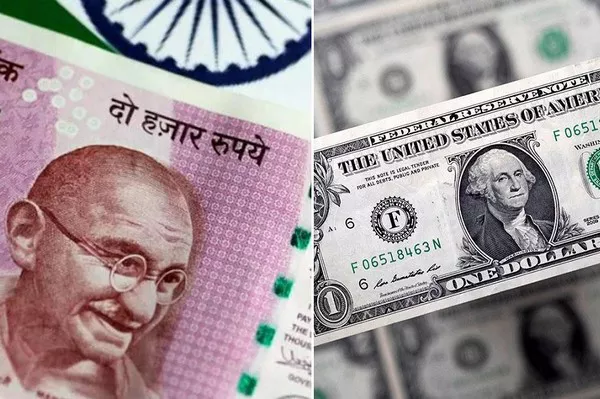The United States Federal Reserve System, often referred to simply as the Federal Reserve, is a cornerstone of the American financial system and a global economic powerhouse. Established in 1913, this institution has become unique in its role and structure, playing a pivotal role in shaping the country’s economic landscape. Its unique features set it apart from central banks in other nations, making it a critical part of the U.S. economic framework. In this article, we will explore what makes the Federal Reserve so exceptional, examining its independence, decentralized structure, dual mandate, and transparency.
Independence
One of the defining characteristics that make the Federal Reserve unique is its degree of independence. Unlike many other central banks around the world, the Federal Reserve operates independently from the political sphere, ensuring that its monetary policy decisions are based on economic considerations rather than political pressures. This independence is enshrined in law, providing the Fed with a significant degree of autonomy in conducting its affairs.
The Federal Reserve’s independence is most evident in the appointment of its leaders. The Federal Reserve Board is comprised of seven governors, who are appointed by the President and confirmed by the Senate for staggered 14-year terms. These lengthy terms insulate governors from short-term political influences, allowing them to focus on making decisions that are in the long-term interest of the economy. The Chairman of the Federal Reserve Board serves a four-year term and is often reappointed across different presidential administrations, further ensuring continuity and independence.
This independence ensures that monetary policy decisions are made based on the best economic analysis rather than political considerations, fostering economic stability and the maintenance of price stability as mandated by Congress.
Decentralized Structure
The Federal Reserve’s structure is another aspect that sets it apart from other central banks. It is a decentralized system, consisting of 12 regional banks known as Federal Reserve Banks, each serving a specific geographic area. This decentralization provides a unique perspective on economic conditions throughout the country and promotes the sharing of valuable insights.
These regional banks are governed by independent boards of directors, who are composed of representatives from the private sector, including banks, businesses, and other organizations. These directors bring a diverse range of perspectives to the Federal Reserve’s decision-making process. The decentralized structure allows the Federal Reserve to stay connected with the various regions of the United States, which may experience different economic conditions and trends.
This decentralization also plays a role in the implementation of monetary policy. The Federal Open Market Committee (FOMC), the body responsible for setting monetary policy, includes both the governors of the Federal Reserve Board and a rotating group of regional bank presidents. This blend of perspectives from different regions of the country ensures that policy decisions are informed by a wide range of economic insights.
Dual Mandate
Another unique aspect of the Federal Reserve is its dual mandate. While many central banks around the world have a primary focus on maintaining price stability (controlling inflation), the Federal Reserve’s mission is broader. It is mandated by Congress to pursue two equally important objectives: maximum sustainable employment and price stability.
This dual mandate gives the Federal Reserve the responsibility not only to combat inflation but also to foster conditions that promote maximum employment. This means that the Federal Reserve takes into account not only inflation but also the health of the labor market when making monetary policy decisions. Striking a balance between these two objectives can be challenging, but it allows the Federal Reserve to have a more comprehensive and dynamic approach to managing the U.S. economy.
Transparency
The Federal Reserve is unique in its approach to transparency. While central banks in some other countries operate with varying degrees of secrecy, the Federal Reserve is committed to providing a high level of transparency and accountability. This commitment to transparency has evolved over the years and has been reinforced through legislation and policy changes.
The Federal Reserve Act of 1977 introduced several key provisions aimed at increasing transparency. For example, the Federal Reserve is required to provide regular reports to Congress, which include detailed information on monetary policy decisions and economic conditions. Additionally, the Federal Reserve now conducts regular press conferences following FOMC meetings to explain its decisions and reasoning to the public and financial markets.
Furthermore, the Dodd-Frank Wall Street Reform and Consumer Protection Act of 2010 increased transparency even further by requiring the Federal Reserve to disclose information about its lending programs, its balance sheet, and the recipients of emergency assistance during the financial crisis.
Conclusion
The Federal Reserve’s uniqueness is a result of its independence, decentralized structure, dual mandate, and commitment to transparency. These features combine to make the Federal Reserve a critical institution in the U.S. economic landscape, contributing to the stability and resilience of the nation’s financial system. Its independence ensures that monetary policy decisions are free from political influence, allowing for a more objective and long-term focus. The decentralized structure ensures that economic perspectives from various regions of the United States are taken into account, enriching the decision-making process. The dual mandate reflects the Federal Reserve’s broad economic responsibilities, and its commitment to transparency fosters public understanding and trust. Together, these qualities make the Federal Reserve truly unique and instrumental in maintaining economic stability and growth in the United States.


